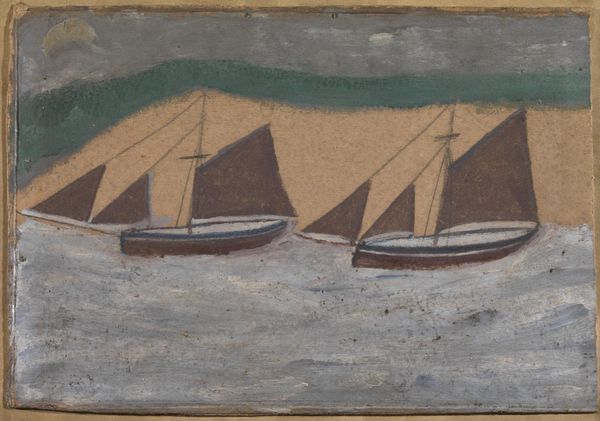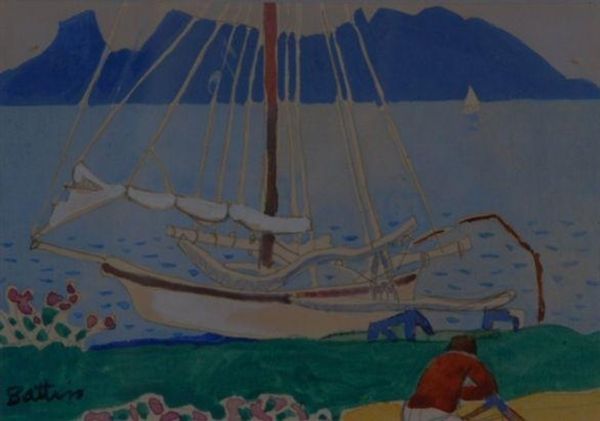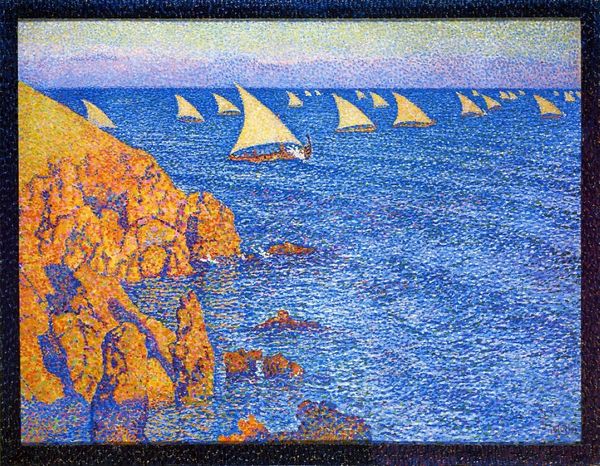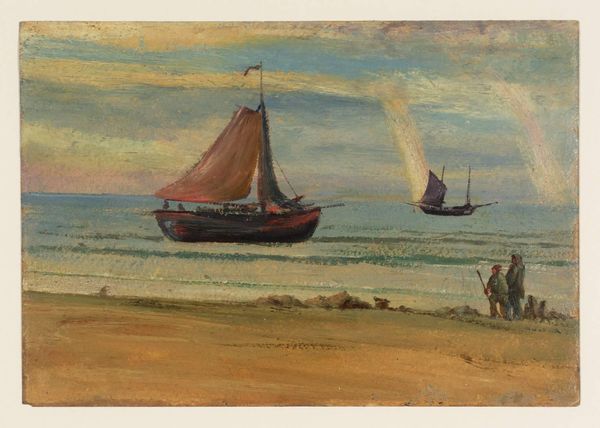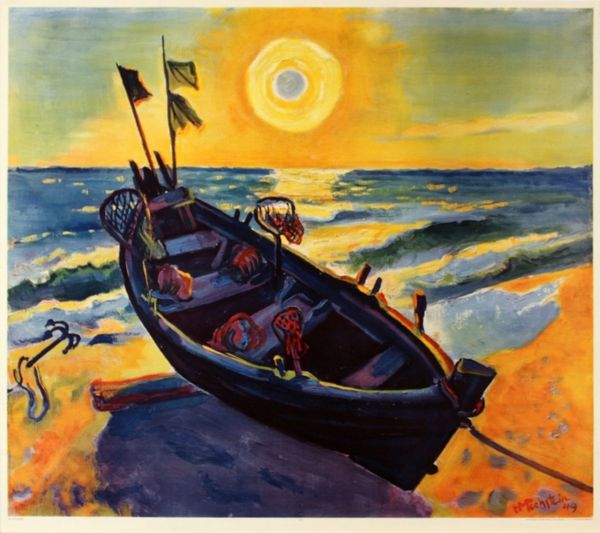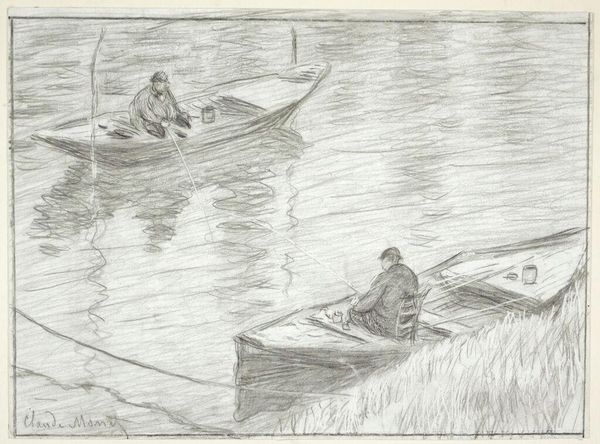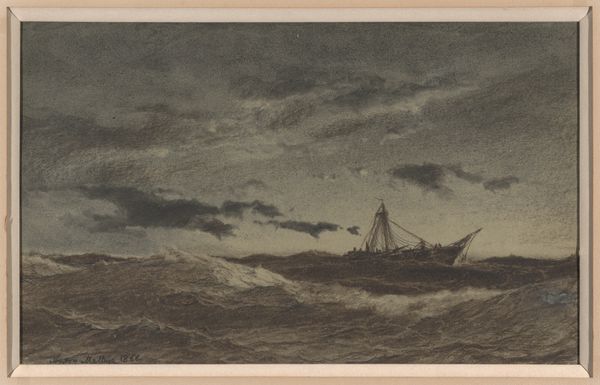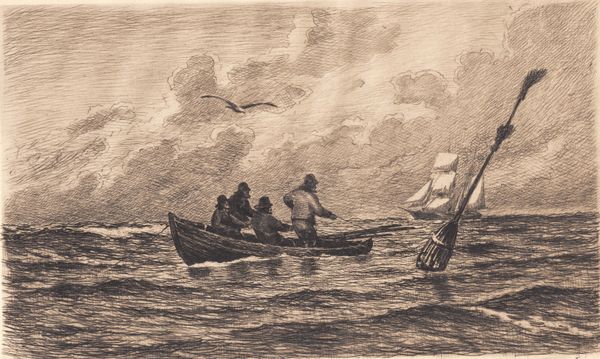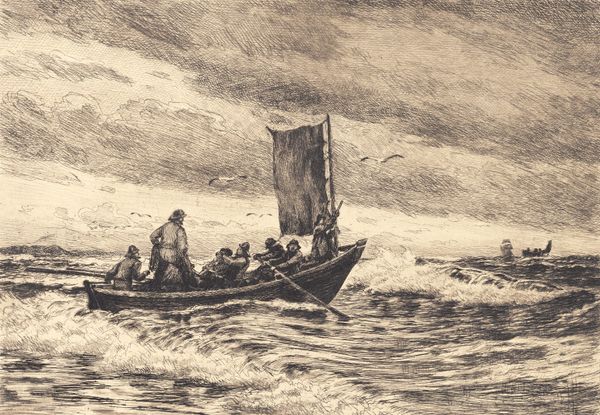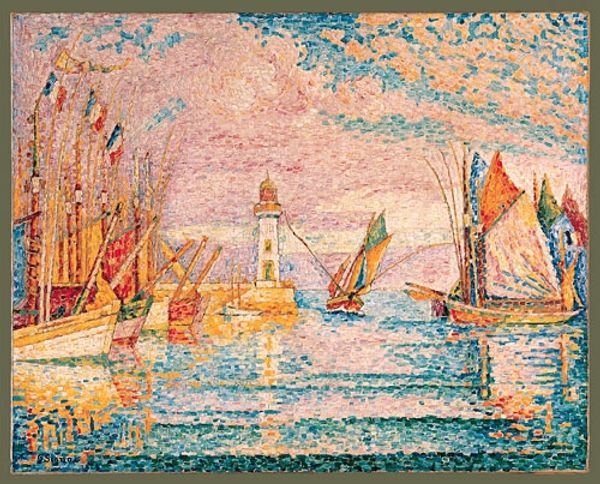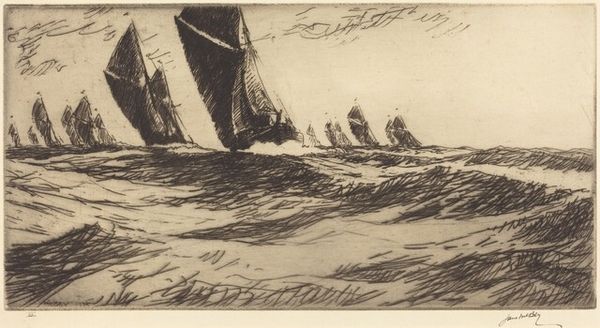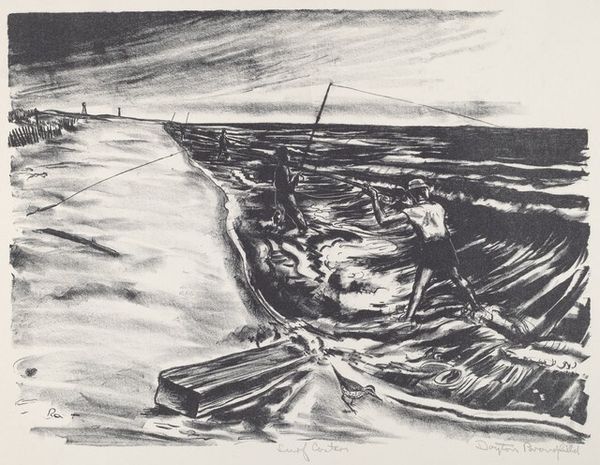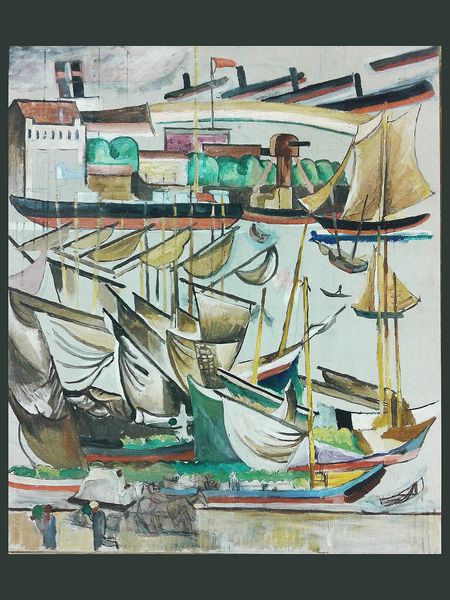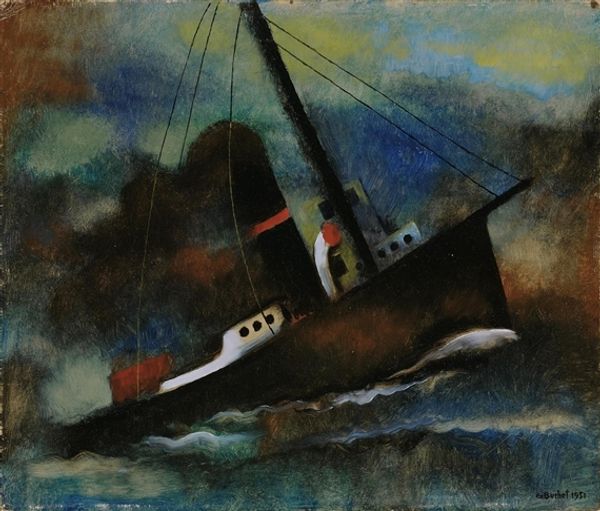
Dimensions: 80.3 x 60.2 cm
Copyright: Public domain
Curator: Here we have Théo van Rysselberghe’s "The Man at the Tiller," painted in 1892. The artwork is currently held at the Musée d'Orsay in Paris. He employs a pointillist technique in oil, rendering a man navigating a boat through rough seas. Editor: Whoa, the mood hits you like a wave, doesn’t it? All that churning green water. I feel like I’m right there, battling the elements! You can almost smell the salt air and feel the boat rocking under you. It has that certain something to drag us right in, don't you think? Curator: Absolutely. Van Rysselberghe, a key figure in the Belgian pointillist movement, meticulously applied countless dots of pigment. Notice how the small, distinct marks, particularly in areas like the sail, function to evoke not just light but a sensation of constant movement and energy? It showcases his interest in optical mixing and the scientific approach to color theory. Editor: And it's not just dots for the sake of dots, right? It feels...purposeful. I mean, look at the guy's face—stoic, weathered. There's a real human story in there, amidst the crashing waves. Was this like, a commentary on the lives of fishermen or something? Curator: Indeed, Van Rysselberghe often depicted scenes of labor and maritime life. Pointillism, which emerged from Impressionism, moved from the celebration of modernity to explore more social-oriented, avant-garde artistic strategies. Consider the material conditions here. The rough existence of the seafarer is linked directly to the material reality of a painting done by labor intensive methods. Editor: Yeah! And in the grand scheme, I wonder, did Rysselberghe know he was crafting this snapshot of labor with a slow, meticulous, 'by hand' mode that would feel radical one day? Pretty intense for its time, and speaks to that connection between subject, medium, and artist’s choices...makes it feel even more potent. Curator: It is interesting to consider the way Van Rysselberghe's chosen method enhanced our insight. In that way, 'The Man at the Tiller' functions not just as a maritime portrait but also an engagement of modern work and social context in art. Editor: I’ll never look at a bunch of dots the same way again, I have to say.
Comments
No comments
Be the first to comment and join the conversation on the ultimate creative platform.
